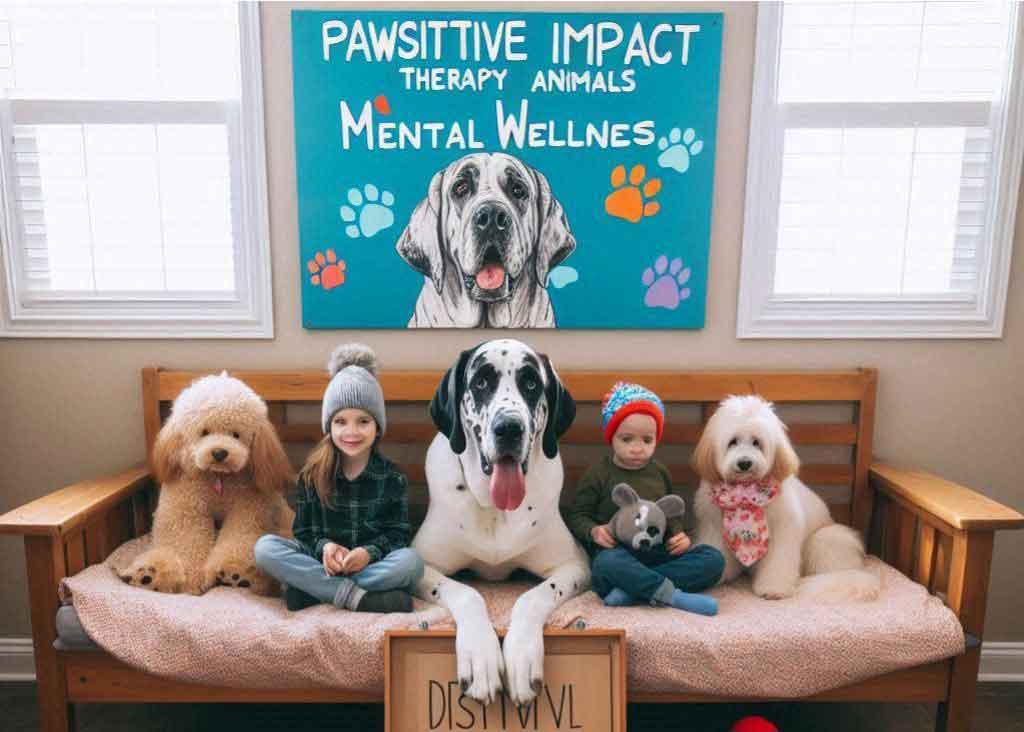Pawsitive Impact: Therapy Animals & Mental Wellness

In recent years, the role of therapy animals in mental health care has gained increasing recognition as a powerful, compassionate complement to traditional treatments. From dogs and cats to horses and even rabbits, these animals offer a unique kind of support that transcends words, tapping into the profound human-animal bond to foster emotional well-being. Whether in hospitals, therapy offices, or community settings, therapy animals are proving to be invaluable allies in the journey toward mental health recovery.
What Are Therapy Animals?
Therapy animals are specially trained creatures that work alongside handlers—often mental health professionals or volunteers—to provide comfort, reduce stress, and assist individuals coping with a range of psychological challenges. Unlike service animals, which are trained to perform specific tasks for one person, therapy animals are typically deployed in group or public settings to benefit multiple people. Their presence is designed to soothe, uplift, and create a sense of connection for those struggling with conditions like anxiety, depression, PTSD, or even everyday stress.
The Science Behind the Connection

The benefits of therapy animals aren’t just anecdotal—they’re backed by science. Interacting with animals has been shown to trigger the release of oxytocin, often called the "love hormone," which promotes feelings of trust and bonding. At the same time, it lowers cortisol levels, the hormone associated with stress. Studies have demonstrated that even brief interactions with a therapy animal can reduce blood pressure, slow heart rates, and ease symptoms of anxiety. For individuals with mental health conditions, this biological response can create a moment of calm in an otherwise stormy emotional landscape.
Beyond the physiological effects, therapy animals offer something less tangible but equally vital: unconditional acceptance. They don’t judge, criticize, or demand explanations. For someone grappling with trauma or self-doubt, the simple act of petting a dog or hearing a cat’s purr can feel like a lifeline—a reminder that they are worthy of affection and care.
Real-World Impact
The applications of therapy animals in mental health care are as diverse as the people they help. In hospitals, dogs might visit patients recovering from surgery or battling chronic illness, offering a distraction from pain and loneliness. In schools, therapy animals help children manage social anxiety or cope with bullying, creating a safe space for emotional expression. For veterans with PTSD, equine-assisted therapy—working with horses—has shown remarkable success in rebuilding trust and confidence.
Take, for example, a therapy dog named Max, a golden retriever who visits a local community center. Max’s weekly sessions with a group of adults managing depression have become a highlight for participants. One attendee shared, “When Max rests his head on my lap, it’s like the weight of the world lifts for a little while.” Stories like these are common, illustrating how therapy animals can bridge the gap between isolation and connection.
Breaking Down Barriers to Care
One of the most remarkable aspects of therapy animals is their ability to reach people who might otherwise resist traditional mental health interventions. For some, sitting in a therapist’s office feels intimidating or clinical. A wagging tail or a gentle nuzzle, however, can disarm those defenses, making it easier to open up. Children, in particular, often find it easier to talk about their feelings with an animal by their side, turning a daunting conversation into a shared moment of play.
Therapy animals also help destigmatize mental health care. Their presence normalizes the idea that seeking support is okay—and even enjoyable. In a society where asking for help can still carry shame, a fluffy companion can make the process feel less like a chore and more like a gift.

Challenges and Considerations
While the benefits are clear, integrating therapy animals into mental health care isn’t without challenges. Not everyone is comfortable around animals—some may have allergies, phobias, or cultural preferences that make the approach unsuitable. Facilities must also ensure proper training, hygiene, and safety protocols to protect both the animals and the people they serve. And, of course, the well-being of the animals themselves is paramount; they need rest, care, and a stress-free environment to thrive in their roles.
A Growing Movement
As awareness grows, so does the use of therapy animals in mental health settings. Organizations like Pet Partners and the American Kennel Club have established rigorous training programs to certify therapy animals, ensuring they’re ready to make a difference. Meanwhile, researchers continue to explore how these furry helpers can be integrated into broader treatment plans, from complementing talk therapy to supporting mindfulness practices.
A Simple Yet Profound Gift
At its core, the magic of therapy animals lies in their simplicity. They don’t need to speak to communicate empathy. They don’t require fancy tools to make an impact. In a world where mental health struggles are increasingly common, these four-legged (or feathered) companions remind us of a timeless truth: sometimes, the greatest healing comes from a quiet, unwavering presence.
So, the next time you see a therapy animal at work—whether it’s a dog trotting through a hospital ward or a horse standing patiently in a field—take a moment to appreciate the profound role they play. They’re not just pets; they’re partners in the delicate, essential work of mending minds and hearts.
Note: This is for informational purposes only and should not replace professional medical advice. Always consult a healthcare professional before starting any new treatment or session.
Join our community today and take the first step towards a healthier, more balanced you.
Photo: @Freepik, @unsplash, @Microsoft Designer

